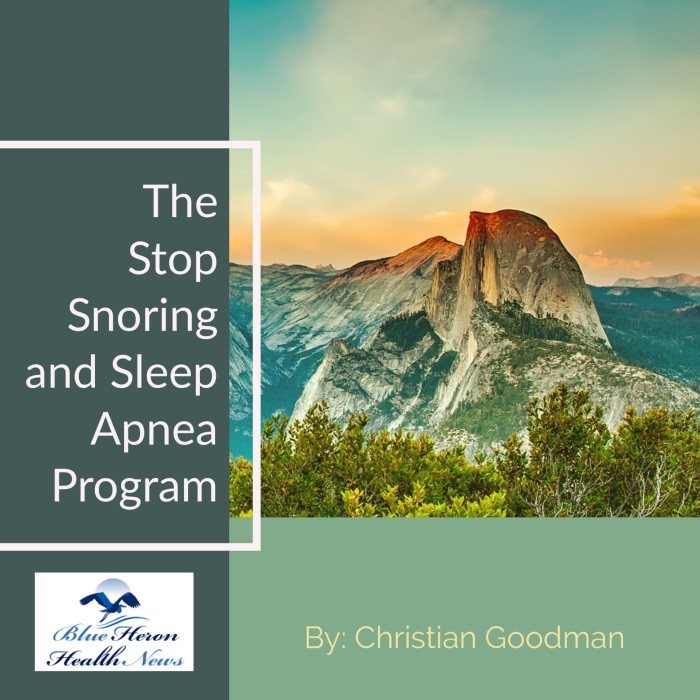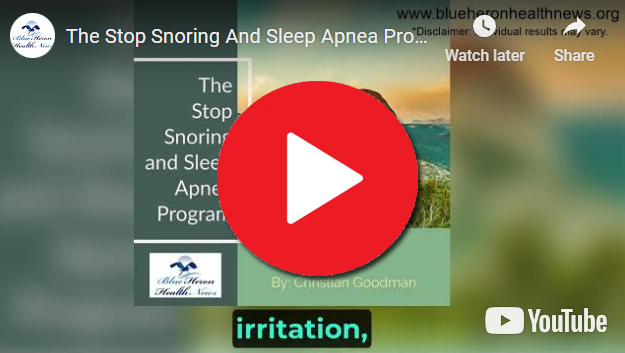
The Stop Snoring And Sleep Apnea Program™ a well-researched program created to help stop snoring and sleep apnea so that you can have a good night sleep. The techniques that you will learn from this program works immediately. It will only take you 3-7 minutes to perform these simple exercises that the author has recommended but the results that you will get will help you have a good night sleep as soon as tonight. Within a week, snoring will be a thing of the past.
What is vestibular rehabilitation therapy?
Vestibular Rehabilitation Therapy (VRT) is a specialized form of physical therapy designed to alleviate problems related to dizziness, vertigo, balance disorders, and gaze instability. These symptoms often result from dysfunction in the vestibular system, which includes parts of the inner ear and brain that help control balance and eye movements. VRT involves exercises that aim to promote compensation by the central nervous system for inner ear deficits.
Key Components of Vestibular Rehabilitation Therapy
- Habituation Exercises:
- Purpose: To reduce dizziness through repeated exposure to specific movements or visual stimuli that provoke symptoms.
- How It Works: By repeatedly performing movements that trigger symptoms, the brain gradually reduces its response to these triggers, helping to desensitize the vestibular system. For example, if turning the head quickly to the left causes dizziness, the patient might repeatedly perform this movement in a controlled way until the response diminishes.
- Gaze Stabilization Exercises:
- Purpose: To improve control of eye movements so that vision remains stable during head movements.
- How It Works: These exercises typically involve focusing on a stationary object while moving the head. A common exercise is the “X1” exercise, where the patient focuses on a fixed target and moves their head back and forth or up and down while keeping the target in focus.
- Balance and Postural Training:
- Purpose: To enhance balance and coordination, reducing the risk of falls and improving daily function.
- How It Works: Balance exercises may include standing on one leg, walking with turns, or navigating obstacle courses. These activities help the patient practice maintaining stability under varying conditions. Therapists might also use tools like balance boards or foam pads to challenge the vestibular system.
- Functional Training:
- Purpose: To improve the ability to perform everyday activities safely and effectively.
- How It Works: Functional training might involve practicing getting in and out of bed, navigating stairs, or walking in crowded or uneven environments. This training helps patients adapt to real-life situations and improve their confidence in managing daily tasks.
- Manual Therapy:
- Purpose: To address any musculoskeletal issues that may contribute to balance problems or vertigo.
- How It Works: This might include techniques to reduce neck stiffness, muscle tension, or other physical issues that can affect posture and balance.
Indications for Vestibular Rehabilitation Therapy
VRT is typically recommended for patients with:
- Benign Paroxysmal Positional Vertigo (BPPV): Involves repositioning maneuvers like the Epley maneuver, in addition to general vestibular exercises.
- Unilateral or Bilateral Vestibular Hypofunction: Includes conditions like labyrinthitis or vestibular neuritis, where there is reduced function in one or both inner ears.
- Meniere’s Disease: Helps manage symptoms like vertigo and imbalance.
- Central Vestibular Disorders: Such as those resulting from stroke, multiple sclerosis, or traumatic brain injury.
- Post-concussion Syndrome: Where balance and dizziness are common symptoms.
- Age-related Dizziness and Balance Disorders: Common in older adults due to age-related changes in the vestibular system and balance.
Benefits of Vestibular Rehabilitation Therapy
- Reduction in Dizziness and Vertigo: By promoting compensation and adaptation, VRT can significantly reduce symptoms.
- Improved Balance and Coordination: Enhances the ability to maintain stability and reduces the risk of falls.
- Enhanced Gaze Stability: Helps patients maintain clear vision during head movements, which is crucial for daily activities like reading or driving.
- Increased Confidence and Activity Levels: Reducing dizziness and improving balance can encourage patients to resume normal activities, improving overall quality of life.
How VRT is Administered
VRT is typically administered by specially trained physical therapists or audiologists. The therapy is highly individualized, with exercises tailored to the specific needs and conditions of each patient. The process usually begins with a comprehensive assessment to identify the specific type and cause of the vestibular disorder, followed by the development of a customized treatment plan.
Conclusion
Vestibular Rehabilitation Therapy is an effective, non-invasive treatment option for individuals experiencing dizziness, vertigo, and balance issues due to vestibular disorders. By using targeted exercises and training, VRT helps patients compensate for vestibular dysfunction, reduce symptoms, and improve overall quality of life. It is important for individuals experiencing these symptoms to consult with healthcare professionals to determine if VRT is appropriate for their condition and to receive a tailored treatment plan.
How can diet impact vertigo?
Diet can significantly impact vertigo, a condition characterized by a sensation of spinning or dizziness, often associated with problems in the inner ear or the vestibular system. While vertigo can result from various causes, including benign paroxysmal positional vertigo (BPPV), vestibular neuritis, Meniere’s disease, and migraines, dietary factors can play a role in managing symptoms. Here’s how diet can influence vertigo:
1. Salt (Sodium) Intake
- Impact on Meniere’s Disease: For individuals with Meniere’s disease, a condition characterized by episodes of vertigo, tinnitus, hearing loss, and a feeling of fullness in the ear, salt intake is particularly important. High sodium levels can lead to fluid retention, which may increase the pressure in the inner ear, exacerbating symptoms.
- Dietary Recommendations: Reducing sodium intake can help manage fluid balance and reduce the frequency and severity of vertigo attacks. It’s recommended to limit salt intake to less than 1,500 to 2,000 mg per day. This includes avoiding high-sodium foods such as processed meats, canned soups, salty snacks, and restaurant meals.
2. Hydration
- Dehydration and Vertigo: Dehydration can contribute to vertigo and dizziness by lowering blood pressure and reducing blood flow to the brain and inner ear. This can lead to symptoms like lightheadedness and a sense of spinning.
- Dietary Recommendations: Maintaining adequate hydration is crucial. Individuals should aim to drink sufficient fluids throughout the day, with a focus on water, to prevent dehydration. It’s especially important to avoid excessive consumption of diuretics such as caffeine and alcohol, which can lead to dehydration.
3. Caffeine and Alcohol
- Effects on the Vestibular System: Caffeine and alcohol can affect the vestibular system and inner ear fluid balance. Caffeine is a stimulant that can exacerbate symptoms of vertigo in some individuals, particularly those with vestibular migraines. Alcohol, being a central nervous system depressant, can alter balance and coordination.
- Dietary Recommendations: Reducing or eliminating caffeine and alcohol intake may help lessen vertigo symptoms. This includes avoiding coffee, tea, chocolate, and caffeinated soft drinks, as well as limiting alcoholic beverages.
4. Sugar and Carbohydrate Management
- Blood Sugar Fluctuations: Fluctuating blood sugar levels can contribute to dizziness and vertigo, particularly in individuals with diabetes or hypoglycemia. Sudden spikes and drops in blood sugar can affect brain function and inner ear fluid balance.
- Dietary Recommendations: Eating balanced meals with complex carbohydrates, proteins, and healthy fats can help stabilize blood sugar levels. It’s important to avoid excessive consumption of sugary foods and beverages and to eat regular meals and snacks to maintain steady blood sugar.
5. Migraine-Related Vertigo
- Trigger Foods: Certain foods can trigger migraines in susceptible individuals, which can sometimes manifest as vertigo (known as vestibular migraines). Common dietary triggers include aged cheeses, processed meats, chocolate, alcohol, and foods containing monosodium glutamate (MSG).
- Dietary Recommendations: Keeping a food diary to identify potential triggers and avoiding known trigger foods can help reduce the frequency of migraine-related vertigo episodes.
6. Food Sensitivities and Allergies
- Inflammatory Response: Food sensitivities or allergies can cause inflammation and other symptoms that may affect the vestibular system, leading to vertigo. For example, gluten sensitivity or celiac disease has been associated with vestibular disorders in some individuals.
- Dietary Recommendations: Identifying and eliminating foods that cause adverse reactions can help reduce symptoms. This may involve allergy testing or an elimination diet under the guidance of a healthcare professional.
7. Vitamin and Mineral Deficiencies
- Nutrient Impact on Balance: Deficiencies in certain vitamins and minerals can affect balance and contribute to vertigo. For example, low levels of vitamin B12 can cause neurological symptoms, including dizziness and balance problems.
- Dietary Recommendations: Ensuring an adequate intake of essential nutrients through a balanced diet or supplements can help prevent deficiencies. Key nutrients include vitamin B12, iron, folate, and magnesium.
8. Overall Healthy Diet
- Anti-inflammatory Diet: Following an anti-inflammatory diet, rich in fruits, vegetables, whole grains, lean proteins, and healthy fats, can help reduce systemic inflammation, which may benefit individuals with vestibular disorders.
- Balanced Diet: A well-balanced diet supports overall health, including maintaining proper blood pressure, circulation, and immune function, all of which can influence vestibular health.
Conclusion
Diet can have a significant impact on vertigo, influencing factors like fluid balance, blood sugar levels, and inflammation. For individuals experiencing vertigo, dietary modifications may be an effective way to manage and reduce symptoms. However, it is essential to consult with healthcare professionals, such as a physician or registered dietitian, to tailor dietary changes to individual needs and underlying conditions. A comprehensive approach that includes dietary management, medical treatment, and lifestyle modifications can help individuals effectively manage vertigo.

The Stop Snoring And Sleep Apnea Program™ a well-researched program created to help stop snoring and sleep apnea so that you can have a good night sleep. The techniques that you will learn from this program works immediately. It will only take you 3-7 minutes to perform these simple exercises that the author has recommended but the results that you will get will help you have a good night sleep as soon as tonight. Within a week, snoring will be a thing of the past.